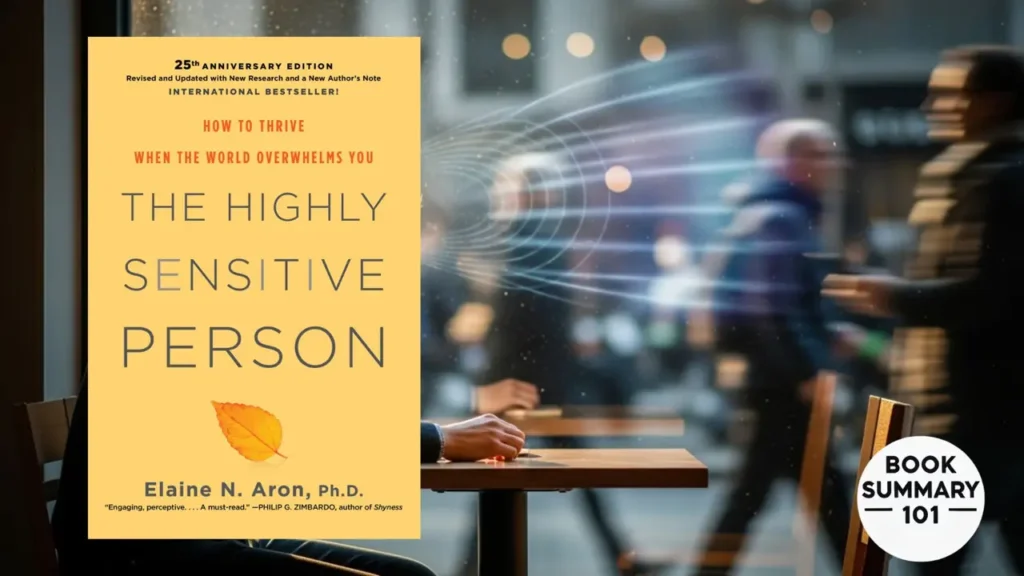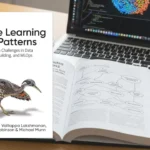Have you ever been told you’re “too sensitive”? Maybe you cry easily at movies, feel drained after social events, or pick up on other people’s moods like emotional Wi-Fi. If that sounds familiar, you might be one of The Highly Sensitive Persons (HSPs) that psychologist Elaine N. Aron writes about in her groundbreaking book, The Highly Sensitive Person: How to Thrive When the World Overwhelms You.
This book doesn’t try to “fix” you — it helps you understand yourself. Aron gently reframes sensitivity as a strength, not a flaw. It’s about embracing your deep emotions, rich inner world, and empathy — while learning how to navigate a world that often feels like it’s turned up to maximum volume.
Let’s break down the five main sections that make this book so transformative.
Why Read This Book?
Because it feels like someone finally gets you.
Elaine Aron’s The Highly Sensitive Person is more than psychology — it’s a mirror for those who have always felt “different.” It teaches you how to honor your emotions, find balance, and turn your sensitivity into a source of peace, creativity, and confidence.
You’ll walk away understanding:
- Why you feel overwhelmed in chaotic settings
- How to manage overstimulation and emotional burnout
- How to build relationships that honor your energy
- And most importantly, how to love your sensitivity instead of resenting it
This book doesn’t just describe you — it empowers you.
Understanding What It Means to Be a Highly Sensitive Person
Elaine Aron begins by introducing the concept of high sensitivity — a biological trait found in about 15–20% of the population. It’s not shyness, introversion, or anxiety (though it can overlap with those). It’s about having a more finely tuned nervous system that picks up on subtleties others miss — sounds, emotions, textures, and even tension in the air.
Aron describes how HSPs process information deeply. This means they reflect more, feel emotions more fully, and notice patterns that others overlook. But this depth of processing also makes them more prone to overstimulation — too much noise, chaos, or pressure can quickly lead to exhaustion.
For many readers, this section is an “aha” moment — the realization that nothing is wrong with them; they’re simply wired differently. Aron even includes a self-test to help readers identify whether they fall into the HSP category.
Key takeaway: Awareness is empowerment. Understanding your sensitivity helps you stop blaming yourself for feeling “too much” and start appreciating your unique depth.
Living in a World That Feels Too Much
Once you understand what it means to be an HSP, the next challenge is learning how to function in a world that’s constantly buzzing — bright lights, loud conversations, endless notifications, and social pressure.
In this section, Aron explores how HSPs often struggle in environments that overstimulate their senses. For instance, an open-plan office with constant chatter, harsh lighting, and tight deadlines can feel unbearable. The same goes for crowded malls, noisy family gatherings, or emotionally charged discussions.
Aron provides practical strategies for managing overstimulation — such as creating quiet spaces, practicing grounding techniques, scheduling downtime between activities, and embracing routines that offer calm and predictability.
She also encourages HSPs to honor their need for rest and solitude without guilt. Taking time to recharge isn’t being antisocial — it’s emotional hygiene.
Key takeaway: You can’t control the noise of the world, but you can control how you engage with it.
Healing from the Past and Rewriting the Inner Story
Many HSPs carry deep emotional wounds from childhood. Maybe you were told to “toughen up,” “stop crying,” or “get over it.” Over time, those messages can lead to shame, self-doubt, and the feeling that being sensitive is a flaw.
This section is one of the most healing parts of the book. Aron helps readers revisit those early experiences and recognize that their sensitivity was never the problem — the lack of understanding around it was.
She explains how sensitive children often absorb emotional energy from parents, teachers, or friends, and how unresolved trauma or criticism can stick with them for years. Through compassionate exercises, Aron guides readers to reframe their inner dialogue, replacing self-criticism with self-acceptance.
This chapter also introduces techniques from psychotherapy and mindfulness to help HSPs let go of perfectionism, people-pleasing, and guilt.
Key takeaway: Healing begins when you realize sensitivity isn’t your weakness — it’s your wisdom.
Building Relationships That Nurture You
HSPs feel relationships deeply — which can be both a gift and a challenge. Because they notice subtle changes in tone, mood, and body language, they often pick up on unspoken emotions and can easily feel overwhelmed by conflict or tension.
Aron explores how HSPs can create healthy, balanced relationships without losing themselves. This involves learning to communicate needs clearly (“I need some quiet time” or “That tone hurt me”) and setting boundaries that protect emotional energy.
She also delves into romantic partnerships — explaining why HSPs often form deep emotional bonds but can struggle with overstimulation during arguments or miscommunication. The goal isn’t to withdraw but to engage with awareness and self-compassion.
Aron highlights that HSPs make incredible partners, friends, and colleagues when they’re not overstretched. Their empathy and intuition often make others feel seen and understood.
Key takeaway: You can love deeply and still protect your peace. Healthy relationships honor your sensitivity instead of draining it.
Thriving as a Highly Sensitive Person
The final section is about stepping into your full power as an HSP. Aron shows how sensitive people can thrive in every area of life — from careers and creativity to spirituality and leadership — when they stop fighting their nature.
She encourages readers to design lives that align with their energy rhythms. That might mean choosing work that allows focus and reflection rather than chaos, or creating daily rituals that nurture calm and creativity.
Aron also dives into how HSPs often have rich inner worlds — they think deeply, dream vividly, and find beauty in small details others miss. This sensitivity can fuel art, innovation, empathy, and meaningful leadership.
The chapter closes with an empowering message: You don’t have to fit into the world’s pace — you can create your own.
Key takeaway: Sensitivity, when embraced, becomes your greatest source of strength and creativity.
Real-Life Examples
💬 Maya’s Story
Maya, a teacher, used to end each school day completely drained. She loved her students but felt overstimulated by noise and chaos. After reading Aron’s book, she realized she was an HSP and started small changes — closing her door for five minutes between classes, using soft lighting, and scheduling quiet time after work. Within weeks, her burnout faded, replaced by a sense of calm and purpose.
💬 Alex’s Journey
Alex, a marketing professional, struggled with anxiety during high-pressure meetings. He used to think he wasn’t “tough enough” for corporate life. But learning about high sensitivity changed everything — he began preparing mentally before meetings, taking mindful breaks, and speaking up when the pace became overwhelming. His confidence grew, and his creative ideas started shining.
💬 Serena’s Transformation
Serena, an artist, spent years feeling “too emotional.” After discovering she was highly sensitive, she stopped hiding that part of herself — and started using it. Her art became richer and more authentic, and people connected to her work on a deeper level.
These stories beautifully illustrate Aron’s message: when sensitivity is understood, it transforms from a burden into brilliance.
Join the Conversation!
Are you an HSP or do you know someone who might be? How has sensitivity shaped your life — both the challenges and the gifts?
Share your experiences below — let’s start a conversation where sensitivity isn’t something to “fix,” but something to celebrate.
5 powerful quotes from The Highly Sensitive Person by Elaine N. Aron
📖 “Being highly sensitive does not mean you are fragile. It means you are more aware than others of subtleties in your environment.”
Meaning: Sensitivity isn’t weakness — it’s heightened awareness. HSPs notice things others miss, like tone, energy, or atmosphere. This depth of perception is a quiet strength.
Simple Terms: You’re not soft; you’re just more tuned in than most people.
📖 “You are not a mistake for feeling things so deeply. The world needs people who feel.”
Meaning: Society often values toughness over tenderness, but deep feelers bring compassion, empathy, and understanding — qualities the world desperately needs.
Simple Terms: Your big feelings are your gift, not your flaw.
📖 “Overstimulation is not a failure — it’s information.”
Meaning: When you feel overwhelmed, it’s not because you’re weak; it’s your body’s signal that you need rest or space. Sensitivity helps you recognize your limits before burnout hits.
Simple Terms: Feeling drained just means it’s time to recharge — not that something’s wrong with you.
📖 “Sensitivity is not something you grow out of. It’s something you grow into.”
Meaning: HSPs don’t need to “toughen up” or hide their emotions. Instead, they learn to use their sensitivity with confidence and wisdom as they mature.
Simple Terms: Don’t fight who you are — learn to own it.
📖 “When you honor your sensitivity, you stop surviving and start thriving.”
Meaning: Life changes when HSPs stop trying to fit into harsh environments and start building lives that support their emotional and sensory needs.
Simple Terms: Accept your sensitivity, and it becomes your strength instead of your struggle.


